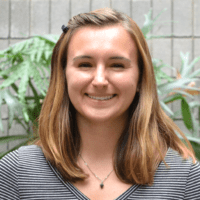
Molecular Characterization of Novel Bacterial Speck Disease Resistance in a Wild Relative of Tomato
Project Summary:
Pseudomonas syringae pv. tomato (Pst) is a pathogen that causes bacterial speck disease on tomatoes which is a chronic problem that is difficult to control using available chemical pesticides. The disease results in necrotic lesions that develop throughout the plant and negatively affects the yield and marketability of the tomato crop. In the summer of 2015, outbreaks of bacterial speck disease occurred across New York which led to serious losses in tomato production. A wild relative of tomato was found to have a resistance locus, referred to as Ror1, that is effective against the New York strains of Pst. Map-based cloning of the Ror1 gene and determination of its disease resistance mechanism would facilitate the deployment of this gene into fresh-market tomatoes, thereby decreasing the need for chemical pesticides.
It was previously determined that Ror1 recognizes the effector protein AvrRpt2 which is present in many Pst strains. This project investigated if Ror1 might confer resistance to other bacterial pathogens that express diverse AvrRpt2 proteins. This was studied through syringe infiltration of Agrobacterium ID1249 with different 35S:avrRpt2 genes into leaves of Nicotiana benthamiana and the wild tomato relative. The wild relative plants were scored for their response to the bacteria and it was found that Ror1 recognizes some of the AvrRpt2 proteins and not others. By determining the mechanism through which Ror1 recognizes AvrRpt2, a model of Ror1-mediated resistance can be developed and used to develop breeding lines that are resistant to bacterial speck disease.
My Experience:
This internship has allowed me to not only learn and obtain essential molecular biology skills, but it has also taught me to be resilient and accommodating. Scientific research is riddled with mistakes and unexpected roadblocks and it is vital to be able to problem solve and keep your head up. Working at BTI has instilled in me a confidence and independence in my research that I am so grateful for. I am extremely thankful for my mentor, Carolina Mazo, for guiding me through my project and offering support at the every step. I am also grateful to have had the pleasure of working with Sammy Mainiero and the other graduate students, postdocs, and undergraduates in the lab. My final thanks extends to Greg Martin for inviting me into his lab; my research would not have been possible without the support and guidance I received from him.
